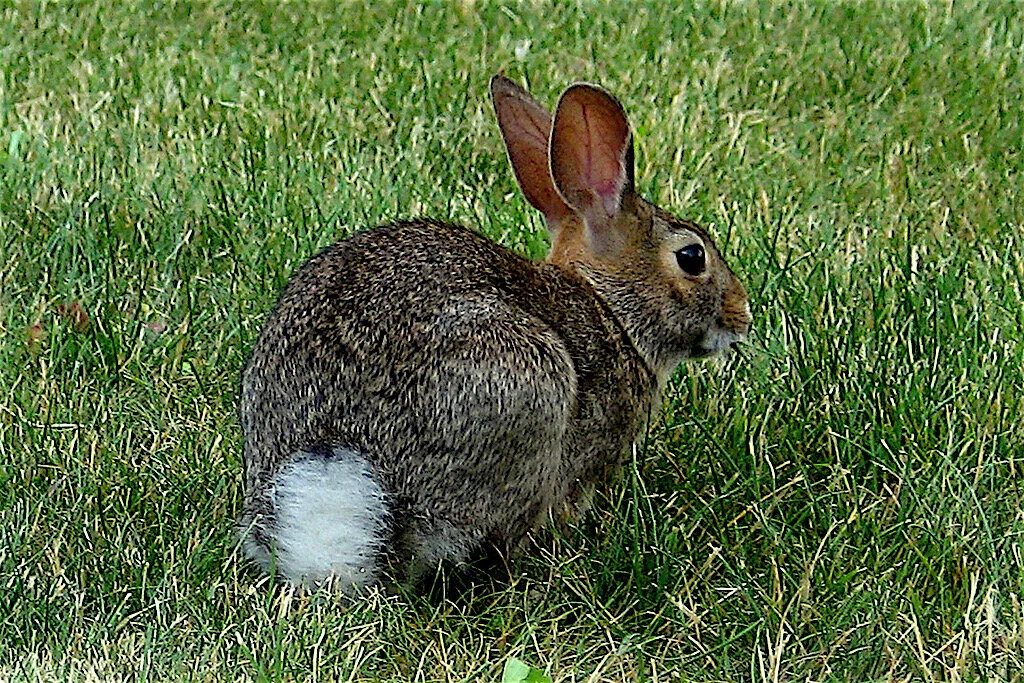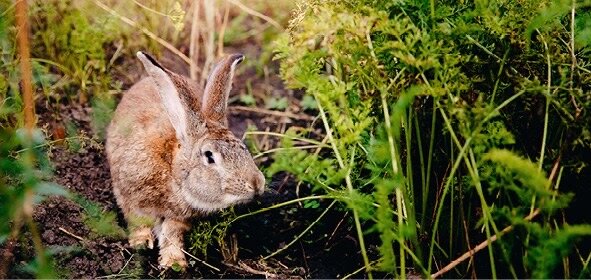Eastern Cottontail Rabbit (Sylvilagus floridanus)
Rabbit Biology
The Eastern cottontail rabbit is a small mammal with a brownish-gray body, long ears, and a small white tuft of a tail that resembles a cotton ball. Eastern cottontail rabbits are polygamous breeders and peak breeding activity occurs in April and May. Young are born between early March and late September, but mostly in May and June. Gestation lasts 29 or 30 days. Litter sizes range from 2-7 young. Eastern cottontails have 2-5 litters per year.
Rabbit Behavior
Eastern cottontail rabbits are year-round residents prefer open areas bordered by thickets or brush areas. Preferably the open area is an old field with tall grass. Nearby burrows are used as protection from predators and harsh weather. Open woods with nearby brush piles or near fields are also used. Still rabbits are found inhabiting suburbs and cities using lawns and nearby borders of shrubbery and other boundary plantings for food and cover.
Rabbit Concerns
Rabbits can be very destructive in gardens and landscaped places. This is particularly true where wild or uncultivated lands border residential zones, parks, greenbelts, or other landscaped places. They also gnaw and cut plastic irrigation lines, especially small diameter tubes and also tend to gnaw the smooth, thin bark from young trees. Rabbits can be carriers of tularemia, or rabbit fever. This disease is relatively rare in humans.
Rabbit Control
A number of methods are available for reducing rabbit damage, but physical exclusion, trapping, and—to a lesser degree—repellents are better choices for protecting garden and home areas.To discourage cottontails, especially in suburban habitats where alternate habitats might be limited, remove brambles, piles of brush, stones, or other debris where rabbits can hide.




